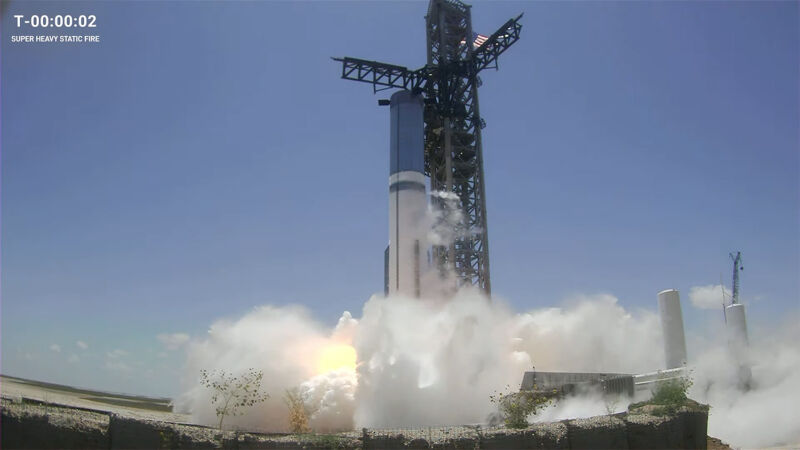
Enlarge / SpaceX test fires its Super Heavy Booster 9 on Sunday. (credit: SpaceX)
SpaceX on Sunday performed a static fire of a new Super Heavy booster at its launch site in South Texas. The ignition of 33 engines proved to be a spectacle, and there were positives and negatives to be taken away from the short-duration test firing.
On the plus side, the rocket—dubbed Booster 9, as it is the ninth to be built as part of SpaceX's iterative design methodology—survived the test and appeared to be in good shape afterward. Also on the positive side of ledger, the company's radically rebuilt ground systems, with an enhanced water suppression system, appeared to function well in protecting the rocket and the launch pad.
However, the test did not run a full duration. It ended after 2.74 seconds, according to SpaceX's webcast, short of the planned five seconds. Moreover, four of the rocket's 33 main Raptor engines shut down prematurely. This indicates that SpaceX is still struggling with the reliability of its Raptor engines despite intense work to improve their performance. This rocket is powered by "Raptor 2" engines, and SpaceX is working on an upgraded "Raptor 3" version to address reliability.